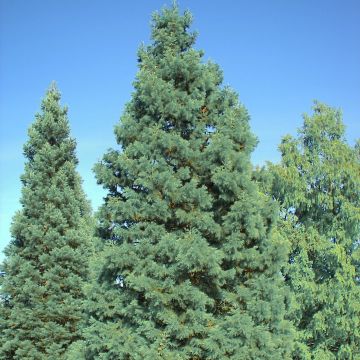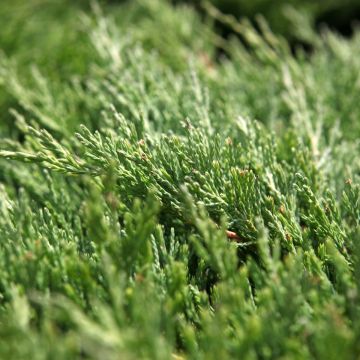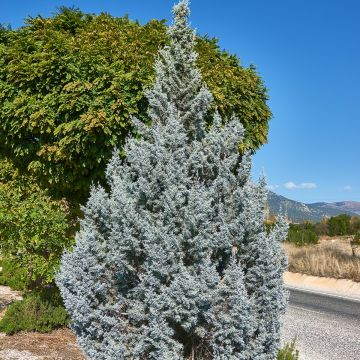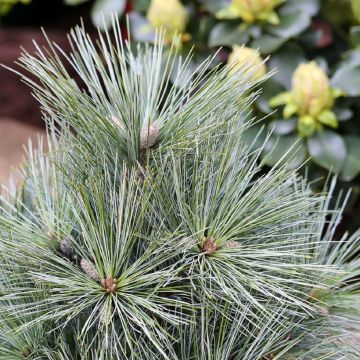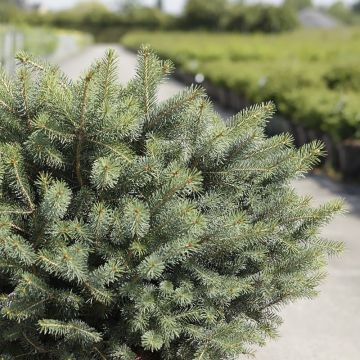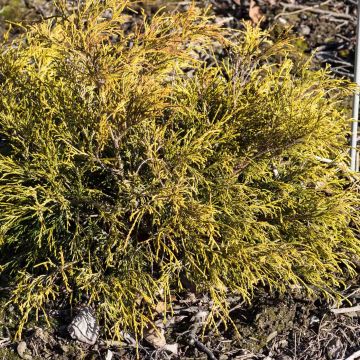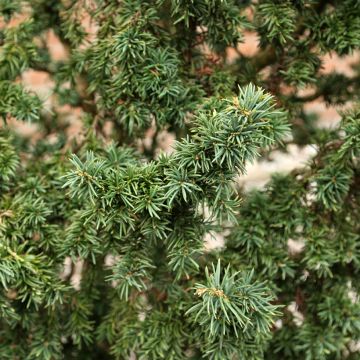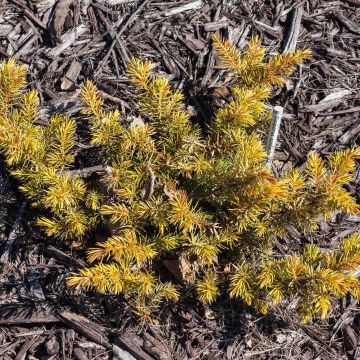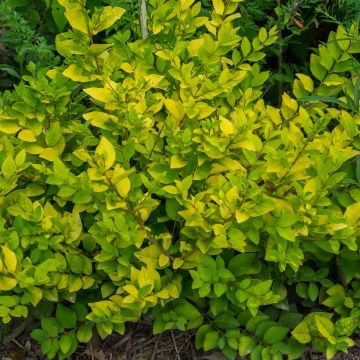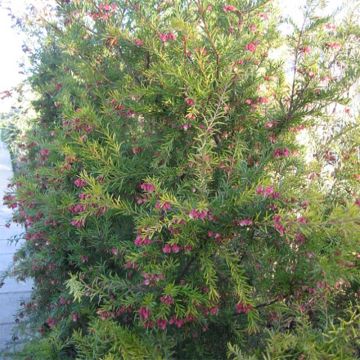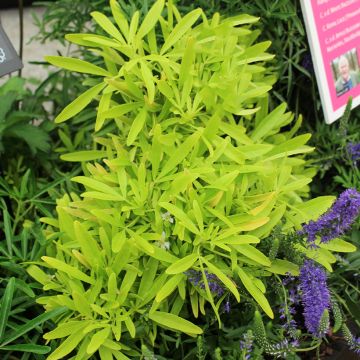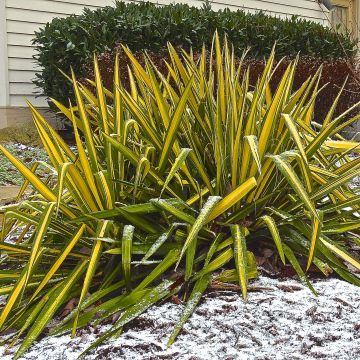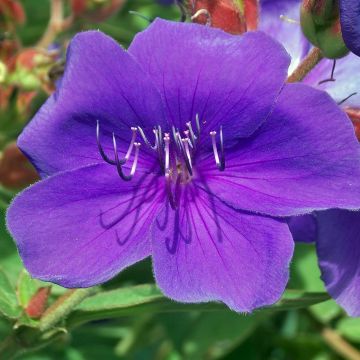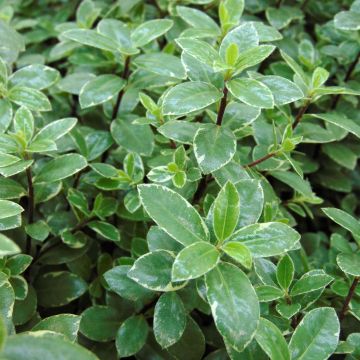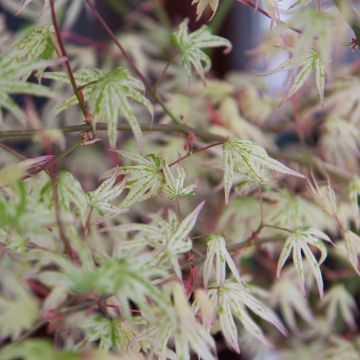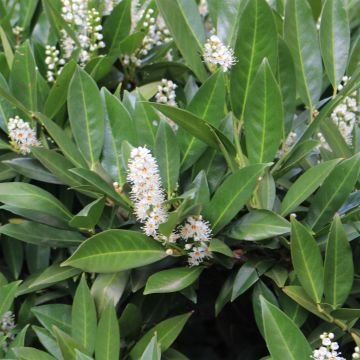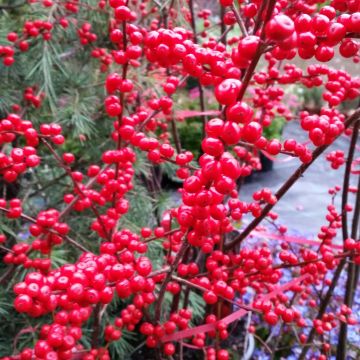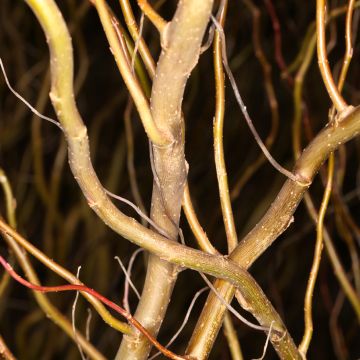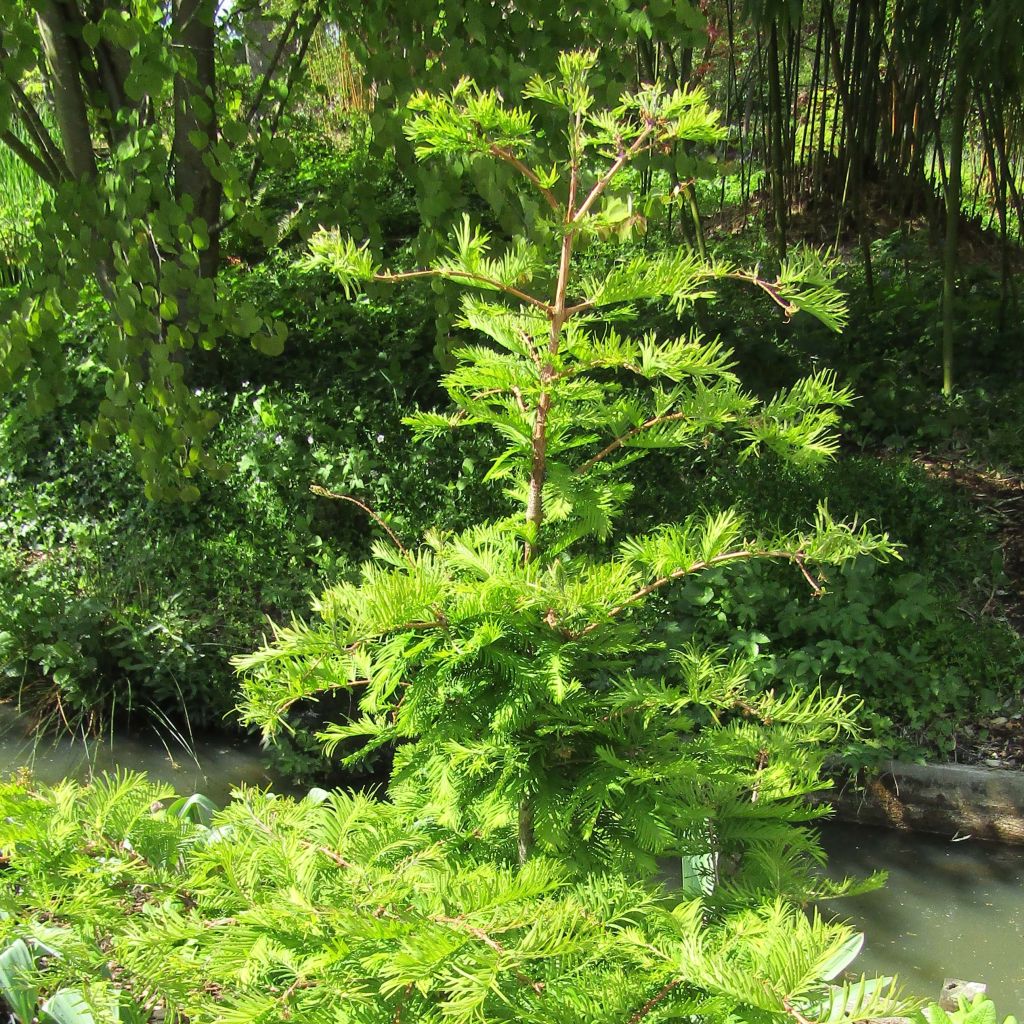

Metasequoia glyptostroboides Chubby - Dawn Redwood
Metasequoia glyptostroboides Chubby - Dawn Redwood
Metasequoia glyptostroboides Chubby
Dawn Redwood, Water Fir
This item cannot be shipped to the selected country
Oversize package delivery charge from €6.90
More information
Schedule delivery date,
and select date in basket
This plant carries a 24 months recovery warranty
More information
We guarantee the quality of our plants for a full growing cycle, and will replace at our expense any plant that fails to recover under normal climatic and planting conditions.
Oversize package: home delivery by special carrier from €6.90 per order..
Express home delivery from €8.90.
Does this plant fit my garden?
Set up your Plantfit profile →
Description
Metasequoia glyptostroboides 'Chubby', much less vigorous than the type species and denser in foliage, is well suited to small gardens. This conifer forms a very regular cone, particularly ramified, adorned with fine fern-like foliage that changes colour throughout the seasons. Its young blue-green shoots turn to a fresh green-yellow in summer, then tinges from pink-violet to yellow before falling in autumn. 'Chubby' is not lacking in appeal in winter, when its cracked reddish-brown bark is on display. Give it a prime location, plenty of light, and moist soil.
Metasequoia glyptostroboides, cousin of Sequoiadendron, is a large conifer of the Cupressaceae family. It is native to China, more precisely to the west of the Sichuan province, where it was only discovered in 1941. It is the only surviving species of a very ancient genus, dating back to the Cretaceous period, concurrent with the extinction of terrestrial dinosaurs and the beginning of an ice age. Its species name, glyptostroboides, refers to the cone-shaped fruits (strobiles) that closely resemble cypress fruits. In its natural environment, under good conditions, it can reach a height of 40m (131ft) with a spread of 10m (33ft), and develop a conical and erect habit, sometimes almost columnar. This species shows very rapid growth in moist soil and appreciates temperate climates as well as non-calcareous marshy soils.
'Chubby' originates from a 'witches' broom' discovered on the vegetation of a classic metasequoia. This quite common natural phenomenon is the result of a disease induced by viruses, fungi, or bacteria. It manifests as an aggregation of dwarfed branches and twigs. 'Chubby' is of modest size with a slow growth rate. It develops very ramified, short, and thick branches, which give its vegetation a plump and chubby appearance. This small tree forms a regular pyramid, reaching a height of about 3.5m (11ft) and a spread of 2.5m (8ft) at ground level. It develops a fluted trunk at the base, covered with cracked reddish-brown bark. Its branches are arranged in an opposite manner and develop into short woody branchlets that themselves bear short and deciduous ramules. The leaves, arranged in two opposite rows along a common axis and on the same plane, are linear, 8 to 15cm (3 to 6in) long and 1 to 2mm (1in) wide. They are flexible, flattened, and blue-green in colour in spring. They turn chartreuse green and then fresh green in summer, before taking on various shades of rusty brown, old pink, and copper before falling. The flowering occurs on mature individuals. The inflorescences are globose, scaly, and pedunculated cones, measuring 2 to 3cm (1in) in diameter.
Metasequoia glyptostroboides 'Chubby' will be an exceptional subject if growing conditions are met. It will be the pride of any gardener who plants it, and will undoubtedly survive, fully integrating the history of a family and a garden. It can be planted as a focal point, especially at the edge of a natural pond where it will thrive. It requires little to no maintenance after the first few years and pairs well with other conifers with autumn foliage such as larch, certain thuja species, or bald cypress. The structural qualities of conifers naturally impose themselves in the design of a contemporary garden, which prefers the aesthetics of shapes, silhouettes, and textures over the fleeting appearance of flowers. Despite being bare in winter, it loses none of its majesty due to its beautiful structure and its twisted trunk on mature specimens.
Report an error about the product description
Metasequoia glyptostroboides Chubby - Dawn Redwood in pictures
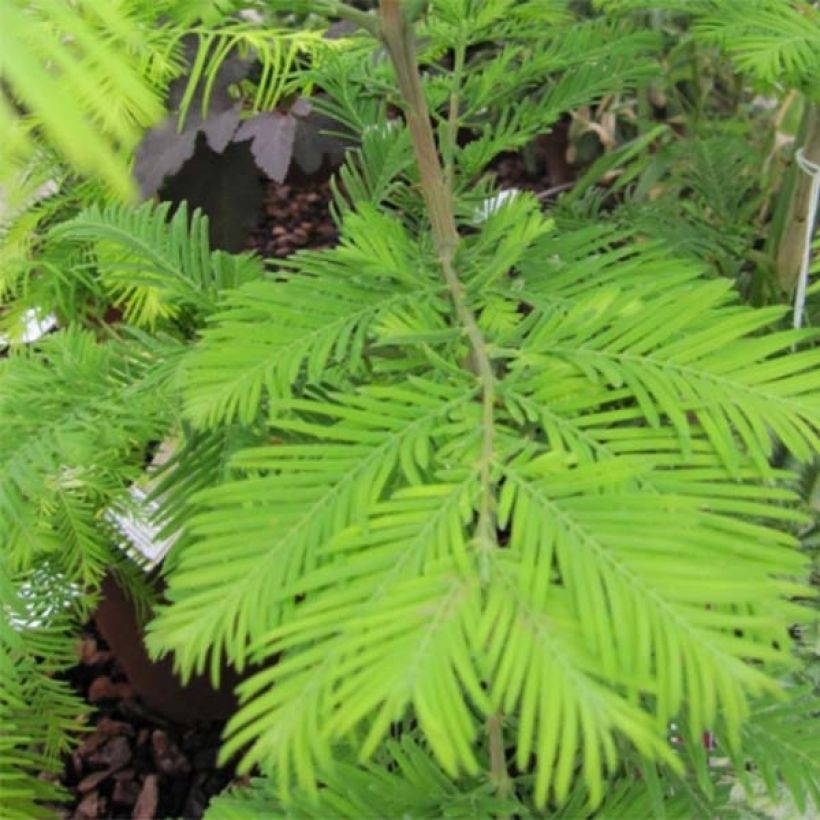

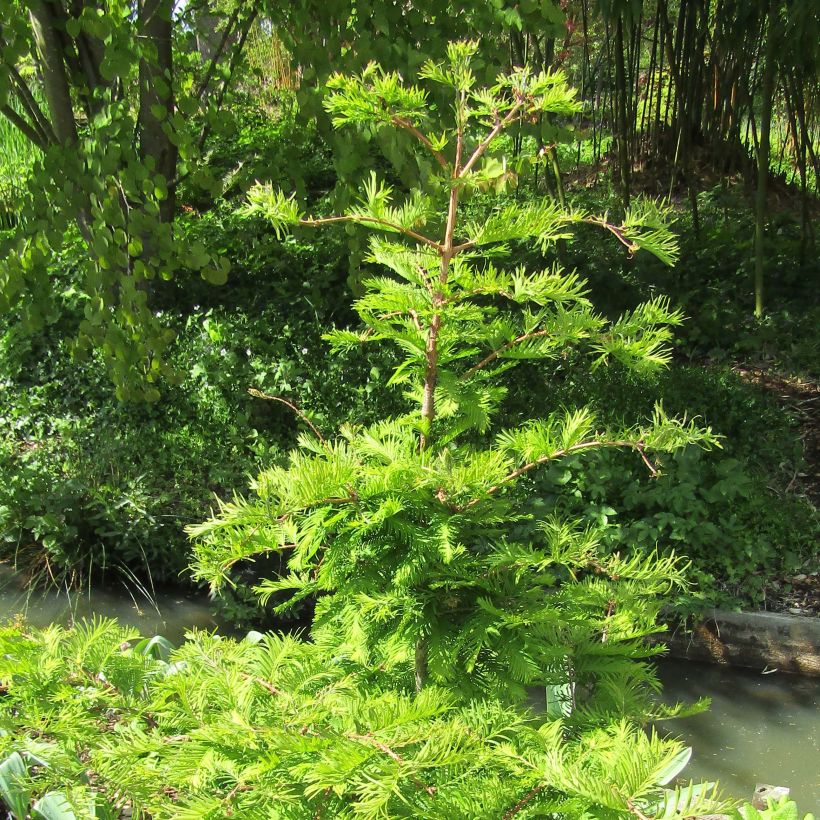

Plant habit
Foliage
Botanical data
Metasequoia
glyptostroboides
Chubby
Taxodiaceae (cupressaceae)
Dawn Redwood, Water Fir
Cultivar or hybrid
Other Conifers A to Z
Planting and care
Plant from September to November and from February to June in deep, fertile, moist to humid soil, close to neutrality or slightly acidic. While it tolerates clay soils, it prefers loose and loamy or sandy soils, that are not too calcareous. Choose a sunny and well-cleared spot. Soak the root balls well before planting. Add organic matter at planting and water generously for the first three years, and in case of drought as it should never lack water. In poor soil, you can apply a special conifer fertiliser every 2 years in April. Hoe the soil in summer. This hardy conifer (up to -15°C (5°F) at least) fears hot summers, and alkaline and excessively dry soils. Pruning is not necessary. However, you can shorten long shoots in spring and/or summer to maintain a perfectly regular habit.
Planting period
Intended location
Care
This item has not been reviewed yet - be the first to leave a review about it.
Striking foliage shrubs
Haven't found what you were looking for?
Hardiness is the lowest winter temperature a plant can endure without suffering serious damage or even dying. However, hardiness is affected by location (a sheltered area, such as a patio), protection (winter cover) and soil type (hardiness is improved by well-drained soil).

Photo Sharing Terms & Conditions
In order to encourage gardeners to interact and share their experiences, Promesse de fleurs offers various media enabling content to be uploaded onto its Site - in particular via the ‘Photo sharing’ module.
The User agrees to refrain from:
- Posting any content that is illegal, prejudicial, insulting, racist, inciteful to hatred, revisionist, contrary to public decency, that infringes on privacy or on the privacy rights of third parties, in particular the publicity rights of persons and goods, intellectual property rights, or the right to privacy.
- Submitting content on behalf of a third party;
- Impersonate the identity of a third party and/or publish any personal information about a third party;
In general, the User undertakes to refrain from any unethical behaviour.
All Content (in particular text, comments, files, images, photos, videos, creative works, etc.), which may be subject to property or intellectual property rights, image or other private rights, shall remain the property of the User, subject to the limited rights granted by the terms of the licence granted by Promesse de fleurs as stated below. Users are at liberty to publish or not to publish such Content on the Site, notably via the ‘Photo Sharing’ facility, and accept that this Content shall be made public and freely accessible, notably on the Internet.
Users further acknowledge, undertake to have ,and guarantee that they hold all necessary rights and permissions to publish such material on the Site, in particular with regard to the legislation in force pertaining to any privacy, property, intellectual property, image, or contractual rights, or rights of any other nature. By publishing such Content on the Site, Users acknowledge accepting full liability as publishers of the Content within the meaning of the law, and grant Promesse de fleurs, free of charge, an inclusive, worldwide licence for the said Content for the entire duration of its publication, including all reproduction, representation, up/downloading, displaying, performing, transmission, and storage rights.
Users also grant permission for their name to be linked to the Content and accept that this link may not always be made available.
By engaging in posting material, Users consent to their Content becoming automatically accessible on the Internet, in particular on other sites and/or blogs and/or web pages of the Promesse de fleurs site, including in particular social pages and the Promesse de fleurs catalogue.
Users may secure the removal of entrusted content free of charge by issuing a simple request via our contact form.
The flowering period indicated on our website applies to countries and regions located in USDA zone 8 (France, the United Kingdom, Ireland, the Netherlands, etc.)
It will vary according to where you live:
- In zones 9 to 10 (Italy, Spain, Greece, etc.), flowering will occur about 2 to 4 weeks earlier.
- In zones 6 to 7 (Germany, Poland, Slovenia, and lower mountainous regions), flowering will be delayed by 2 to 3 weeks.
- In zone 5 (Central Europe, Scandinavia), blooming will be delayed by 3 to 5 weeks.
In temperate climates, pruning of spring-flowering shrubs (forsythia, spireas, etc.) should be done just after flowering.
Pruning of summer-flowering shrubs (Indian Lilac, Perovskia, etc.) can be done in winter or spring.
In cold regions as well as with frost-sensitive plants, avoid pruning too early when severe frosts may still occur.
The planting period indicated on our website applies to countries and regions located in USDA zone 8 (France, United Kingdom, Ireland, Netherlands).
It will vary according to where you live:
- In Mediterranean zones (Marseille, Madrid, Milan, etc.), autumn and winter are the best planting periods.
- In continental zones (Strasbourg, Munich, Vienna, etc.), delay planting by 2 to 3 weeks in spring and bring it forward by 2 to 4 weeks in autumn.
- In mountainous regions (the Alps, Pyrenees, Carpathians, etc.), it is best to plant in late spring (May-June) or late summer (August-September).
The harvesting period indicated on our website applies to countries and regions in USDA zone 8 (France, England, Ireland, the Netherlands).
In colder areas (Scandinavia, Poland, Austria...) fruit and vegetable harvests are likely to be delayed by 3-4 weeks.
In warmer areas (Italy, Spain, Greece, etc.), harvesting will probably take place earlier, depending on weather conditions.
The sowing periods indicated on our website apply to countries and regions within USDA Zone 8 (France, UK, Ireland, Netherlands).
In colder areas (Scandinavia, Poland, Austria...), delay any outdoor sowing by 3-4 weeks, or sow under glass.
In warmer climes (Italy, Spain, Greece, etc.), bring outdoor sowing forward by a few weeks.

































